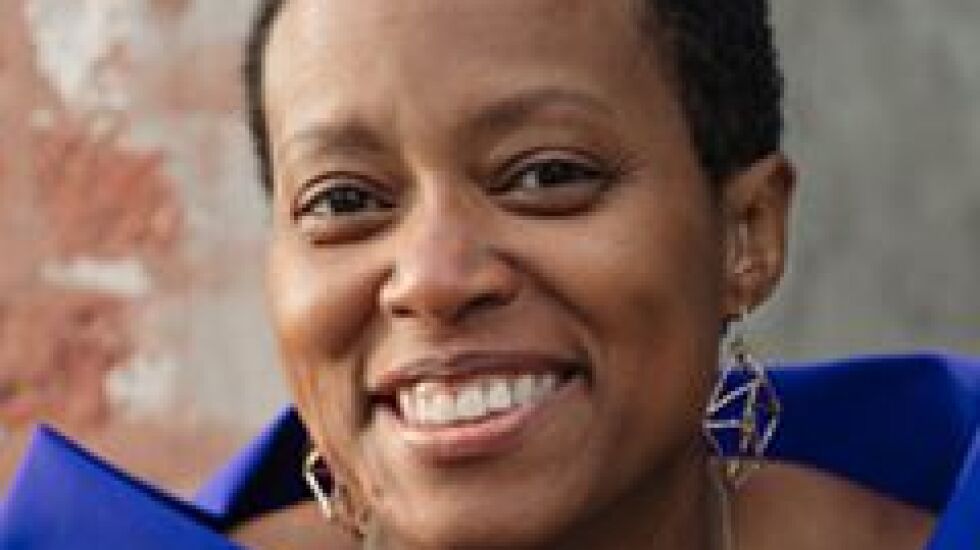
Reuben Jonathan Miller spoke about his life’s work this week at a breathless clip, as though he’d just discovered a new animal species or a previously unknown galaxy.
But it isn’t so much excitement that informs his work, as it is seriousness and urgency. Miller is a sociology professor at the University of Chicago’s school of social work, studying the impact of the American jail and prison systems on inmates — both while they’re locked up and after they are released.
The subject is deeply personal for Miller, whose older brother spent two years in prison.
“It was awful. It was a difficult, stressful time, and having gone through it, it allowed me to connect with the people I study that I think other researchers either didn’t or don’t care to write about,” Miller said.
For his work, Miller was on Wednesday named a 2022 MacArthur Fellow, an honor that is “intended to encourage people of outstanding talent to pursue their own creative, intellectual, and professional inclinations,” according to the Chicago-based John D. and Catherine T. MacArthur Foundation. The fellowship, commonly called a “genius grant,” comes with a no-strings-attached $800,000 stipend.
Miller, who grew up in the Bronzeville neighborhood, is one of 25 MacArthur Fellows, a list that includes two others from Chicago: Tomeka Reid, a jazz cellist and composer, and Amanda Williams, an artist and architect.
Miller, 46, described the honor as “wonderful, life-changing and beautiful.”
“Usually, I get a certificate,” Miller joked.
“Reuben Miller is changing how the broader American public understands the afterlife of incarceration for individuals and families,” Marlies Carruth, the MacArthur Fellows director, said in a statement. “Through his long-term ethnographic research, much of it conducted in Chicago and Detroit, and deeply humanizing way of conveying his subjects’ experiences, Miller offers us a window into the alternate legal reality that people with felony convictions must navigate, long after they have served their time.”
A stint as a volunteer chaplain at the Cook County Jail when he was in his mid-20s sparked his interest in the people living behind bars — a population that, he said, is about 80% Black on any given day.
“Jails and prisons are filled with people we’ve learned to overlook,” he said.
He has spent much of the intervening time researching families caring for people who’ve been locked up.
Miller said the public needs to view mass incarceration as a “problem of citizenship.”
“For people with criminal records, there are alternate rules and responsibilities and restrictions that target them and only them,” he said.
He pointed to his older brother, who spent two years in prison and then ran into major obstacles when he tried, while on probation, to get his life back on track.
“He gets his truck driver’s license, but he can’t leave the state. So he can’t drive the truck and feed himself and support himself,” Miller said. “It was a real ordeal, and millions of families go through this every year.”
Tomeka Reid
Jazz cellist and composer Reid — speaking by phone from Germany, where she is an artist in residence for the year at the Moers Festival — described this week’s recognition as a “huge honor.”

Reid grew up on the outskirts of Washington, D.C., but her music career began after moving to Chicago in 2000.
The cello isn’t, perhaps, an obvious choice for a jazz ensemble.
“It’s not as common as a trumpet or a saxophone, but I’m hoping to disrupt that,” Reid said. “Every band needs a cello player. It’s just a beautiful instrument. It has really unique qualities. Strings have been in jazz music since the beginning.”
In her improvisation, Reid said she seeks to show the instrument’s versatility. She’s not only interested in the harmonic function within jazz but also the “textural and sonic elements” and what she calls “extended techniques.”
“It’s like expanding the jazz language,” she said.
Said Carruth: “Tomeka Reid is a jazz cellist and improviser forging a unique sound through the use of extended techniques. The cello is not a traditional jazz instrument, and Reid is creating a space for it as a performer, composer, and bandleader.”
Amanda Williams
Williams, who turned 48 Wednesday, is perhaps best known for a two-year project that began in 2014 and involved the artist painting the exteriors of eight condemned houses on the South Side with vibrant hues associated with products — including a blue jar of Ultra Sheen hair care — that people in the community would be expected to know well.

“It really was about connecting people to an idea of value — what things they think are important — and questioning that,” Williams said. “Obviously, Ultra Sheen has a huge importance to a Black community, especially of a certain era, and so what does that mean when you shroud a piece of architecture that also should have a huge importance, not just to those people, but to a city or a community. Why is it allowed to sit and become valueless and what does it mean to shroud it in colors that are priceless?”
Williams’ other works include an exhibit titled, “What Black is this you say?” Black overwhelms each canvas, but with glints and scuffs and smears of other colors.
Williams painted those during the pandemic, raising questions about what she sees as the seemingly sudden interest in Black lives after the murder of George Floyd.
“I pushed back a little bit and said, ‘Well, which Black lives?’ Because it’s not a monolithic thing. The color black is actually not monolithic and Black people are not monolithic,” Williams said.
Said Carruth: “Amanda Williams brilliantly blurs the distinction between art and architecture, resulting in a creative and inspiring artistic practice. Through innovative uses of color, structures, and urban spaces, her works make visible the ways we value the built environment, and the ways cultural associations inform our understanding of color.”







